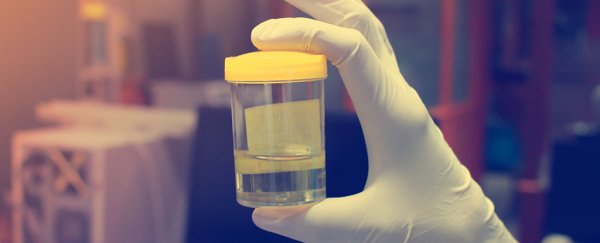A new study shows that the current standard test for urinary tract infections is failing to detect the culprit bacteria in at least one-fifth of cases, leaving many patients without necessary treatment.
Some 150 million UTIs are diagnosed worldwide every year, most of them in women, whose anatomy makes them more susceptible to the wrong bacteria travelling up into the bladder.
If you've ever had a UTI you know how unpleasant it is. And it's even worse if you show up at the doctor with all the symptoms of an infection - such as frequently needing to pee but being unable to empty your bladder, and a burning pain while peeing - only to have a test show there's no bacteria present and there's nothing they can do.
This happens in around a quarter of all cases, even giving rise to a heavily debated diagnosis called 'urethral syndrome', which some researchers have suggested to be psychosomatic.
"A substantial percentage of women visiting their general practitioner with symptoms of a UTI, who test negative for a bacterial infection, are told they have no infection and sent home without treatment," says physician and researcher Stefan Heytens from the University of Ghent, Belgium.
To see whether the tests might be to blame, the researchers sampled the urine of 308 participants - 220 women who'd complained of uncomplicated UTI symptoms, and 86 samples from women without any symptoms (control group).
An uncomplicated UTI means the patient is otherwise healthy and there's no abnormality or disease that could predispose them to more frequent infections.
All samples got the standard testing, which involves dipping some agar into the urine and then culturing it to see whether any bacteria start proliferating.
But the researchers also ran a much more sensitive test called quantitative polymerase chain reaction (qPCR), which can sniff out even the tiniest quantities of bacterial DNA.
Among women with UTI symptoms, the standard test detected bacteria in 80.9 percent of the cases, but the qPCR results blew those results out of the water, finding E. coli in 95.9 percent of the same samples, and S. saphrophyticus in 8.6 percent.
Combining the results of the standard test and qPCR, the researchers found an infection in 98.2 percent of women who had UTI symptoms.
"These findings suggest that almost all women with typical urinary complaints and a negative culture still have an infection with E. coli," they write.
For now, they're not sure why in some of the cases bacterial samples didn't grow in the cultures of the standard test.
"The microbiologists in our institution do not have the slightest idea. They are just surprised that their test is not as infallible as they thought," Heytens told Hannah Devlin at The Guardian.
Interestingly, the tests also picked up E. coli in control samples - 10.5 percent with the standard test, and 11.6 percent with qPCR. But that's not shocking, since we now know that urine is not entirely sterile.
What matters is whether those bacteria cause symptoms.
"Our findings support previous research which indicates that traditional testing may not be helpful in uncomplicated UTIs," says Heytens.
"However, traditional urine culture tests may still have a role to play if treatment fails or if there are signs and symptoms of a more complicated UTI."
These results are opening up a slew of questions on how best to treat someone who comes to the doctor with symptoms of a urinary tract infection.
"Instead of spending time and energy to prove an uncomplicated UTI, physicians can rely on the typical symptoms and focus on acknowledging and managing the patient's complaints," the team write in the study.
This suggests that anyone who comes to the doctor with UTI symptoms should just be given antibiotics, but unfortunately, that approach poses a whole new conundrum.
Antibiotic resistance is still an ever-growing concern, and a UTI is one of the most common complaints that earns a prescription.
The researchers are hoping to verify the results with further studies, and are also planning to determine whether women with UTI symptoms but a negative culture would even benefit from a round of antibiotics.
That's a good question to ask, since we know that sometimes UTIs can resolve on their own within a few uncomfortable days, provided you drink plenty of fluids (although don't bother with cranberry juice and, whatever you do, don't hold it in). But if in doubt, it's always worth getting a second opinion.
In another promising development, scientists are working on finding ways to flush the infection-causing bacteria from the bladder without any antibiotics at all.
But whatever ends up being the most suitable treatment, at least we can finally lay to rest the persistent myth of 'urethral syndrome', and stop telling women that their uncomfortable symptoms are all in their heads.
The research was published in Clinical Microbiology and Infection.
